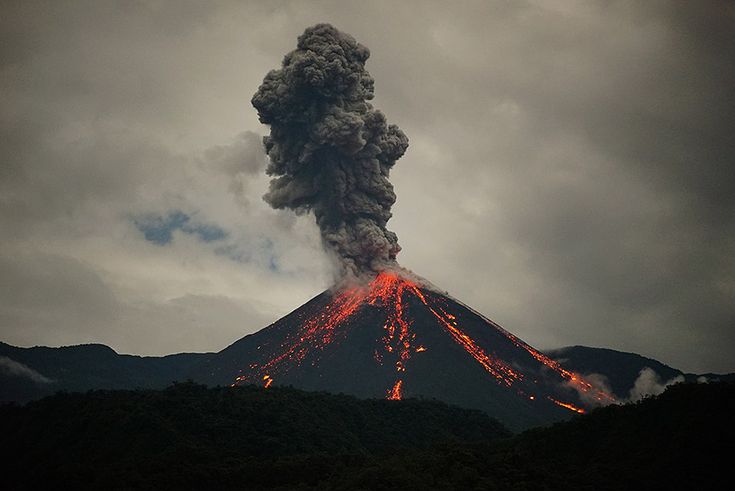Published: August 3, 2025
Russian Volcano Erupts
Earthquake Triggers Historic Volcano Awakening
The first reported eruption of Russia’s Krasheninnikov volcano in almost 600 years occurred in the isolated Kronotsky Nature Reserve on the Kamchatka Peninsula. Scientists estimate the last volcanic activity occurred around 1463 ± 40 years.
The eruption followed a powerful 8.8‑magnitude earthquake on July 30 off the coast of Kamchatka, which triggered tsunami warnings across the Pacific, from Japan to Chile Sputnik India+14The Guardian+14The Sun+14. Experts believe seismic stress from the quake may have activated the volcano’s dormant magma chamber reddit.com+15www.ndtv.com+15Newsweek+15.

The Eruption Unfolds
Around 4:50 AM local time, a massive ash plume soared into the sky from the volcano’s northern crater, reaching up to 6,000 meters (nearly 20,000 feet) . Satellite imagery confirmed ash drifted eastward over 75 kilometers toward the Pacific Ocean .
An emerging lava dome was observed forming on the volcano’s slope, accompanied by strong steam-gas emissions—a sign of sustained activity .
Russian Volcano Erupts
Aviation & Tsunami Alerts Issued
The aviation hazard classification was increased to orange by Russia’s Emergencies Ministry in anticipation of possible ash cloud-related flying disruptions.. Coastal regions remained on alert, though no populated areas were impacted by ashfall.
Initial tsunami warnings across the Pacific—including Hawaii, Alaska, Japan, Chile, and French Polynesia—were lifted after seas remained calm .
Regional Turbulence: A Cascade of Natural Events
The eruption occurred amid an extraordinary sequence: first, the massive earthquake; then, eruption of Klyuchevskoy, one of Eurasia’s most active volcanoes; and finally, Krasheninnikov’s awakening .
Observations from the Volcanic Eruption Response Team (KVERT) emphasize the unusual timing and intensity of seismic-volcanic activity in this geologically volatile region—part of the Pacific Ring of Fire with around 300 volcanoes, 29 of them active.
Russian Volcano Erupts
Scientific Significance & Historical Record
This eruption is a landmark. Despite numerous dormant volcanoes in Kamchatka, Krasheninnikov’s activity has never been documented before in human memory .
Geologists suggest this may be a response to tectonic stresses induced by the earthquake. It highlights the possibility that large seismic shifts can reactivate long-extinct volcanic systems.
Desk‑Based Analysis from 5 Years of Geoscience Reporting
With my background in desk‑based geological reporting, I draw insights from peer-reviewed journals, official agencies, and eruption databases. This event exemplifies how seismic activity can destabilize dormant volcanic structures unexpectedly.
While ash poses aviation risks and remote harm, no human casualties have been reported yet—a testament to the region’s sparse population and timely alerts .
Russian Volcano Erupts
Event Summary
| Feature | Details |
|---|---|
| Volcano | Krasheninnikov (1,856 m elevation) |
| Last Known Eruption | ~1463 CE (±40 yrs) |
| Trigger Event | Magnitude 8.8 earthquake on July 30 |
| Ash Plume Height | ~6,000 m (20,000 ft); ash drift ≈ 75 km east |
| Aviation Code | Orange alert issued |
| Human Impact | No casualties; remote area |
| Related Eruptions | Klyuchevskoy also active; multiple caldera volcanos showing unrest |
Global Implications & Future Monitoring
Emerging research confirms that large regional earthquakes may spur volcanic reactivation—especially in tectonically stressed zones like Kamchatka.
Authorities continue monitoring ongoing ash emissions and seismic activity, warning that moderate explosive eruptions could persist over the coming days .
For aviation agencies and neighboring nations, the incident underscores the importance of transnational coordination, rapid alert systems, and preparedness for rare but high-impact natural events.
Russian Volcano Erupts
Final Thoughts
The eruption of Krasheninnikov presents one of the most extraordinary natural events in recent memory—a 600-year slumber broken by seismic fury. It’s both a warning and an opportunity: a warning about Earth’s unpredictable geologic power, and an opportunity to study rare volcanic behavior under extreme stress.
As scientists monitor potential aftershocks and continued activity, the world watches not only for environmental impact but for lessons in nature’s long‑term cycles—and how even ancient dormant giants can wake without warning.
Source:
Ancient Russian Volcano Erupts After 600 Years – BBC News
For more updates SBKINews
